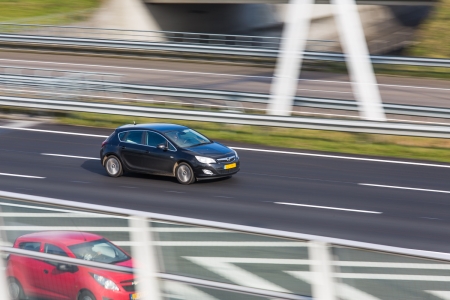In 2019, SWOV studied the effect of the increased general maximum speed on Dutch motorways that had been introduced in 2012 and, since then, adopted at more and more locations. The study [32] showed that the increase to 130 km/h on the relevant road sections resulted in:
- a small increase of average speed;
- a somewhat higher V85 (the speed which is exceeded by 15% of the vehicles);
- a somewhat greater dispersion of speeds;
- a marked larger difference between speeds on the right and the left lane on roads with more than two lanes; on two-lane roads, speed differences hardly changed.
The exact effect on speed proved to strongly depend on location. The increase in the number of road deaths on motorways in recent years could not be unequivocally attributed to the speed limit increase to 130 km/h. A previous study by engineering consultancy firm Sweco [33] showed that in the five years following the increase (2013-2017), fatal crash rate on roads with a permanent or variable 130km/h limit had increased by 17% more than on roads with unchanged limits. In absolute terms, the numbers were fairly small: an increase of approximately two fatal crashes a year.
